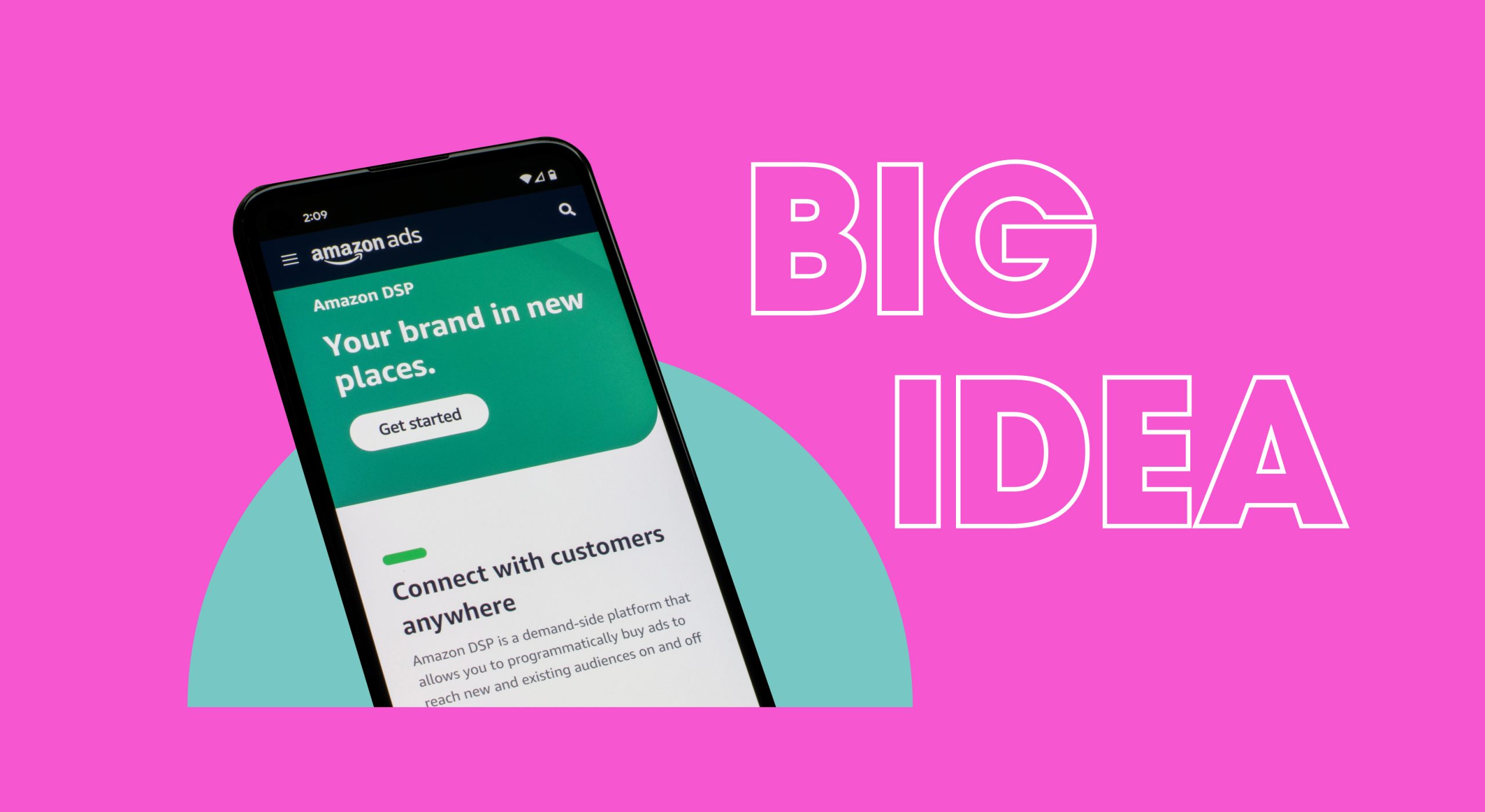Statistics reveal that nearly half of Amazon sellers earn between $12,000 and $30,000 per year. But there are others who take home as much as $45,000 per year.
Their secret weapon: Amazon advertising.
In this issue, we’ll help you navigate the world of Amazon ads and realize the big opportunities they can provide to your business. Let’s dig in, shall we?

BIG IDEA
Advertising is an indispensable catalyst for business growth and success. Not only does it connect you to your customers, it also increases your brand awareness and sales.
As such, even Amazon is stepping up its advertising game. Its ad business, Amazon Advertising, is making a name as a one-stop platform where sellers like you can display ads to target buyers.
To shed light on what more Amazon Advertising can offer, BigCommerce shared an overview of this advertising solution.
🖱️ What is Amazon Advertising?
Amazon Advertising is a pay-per-click (PPC) service that allows you to use Amazon data to reach buyers. It promotes high-converting products with high sales and good reviews to boost sales.
There are 6 types of ads in this model:
- Sponsored Products - keyword-targeted ads that appear on search results and product detail pages.
- Sponsored Brand Campaigns - ads that allow you to promote multiple products on search results.
- Product Display Ads - PPC ads designed to cross-sell and/or upsell to consumers.
- Video Ads - ads that can be placed on Amazon-owned sites (like Amazon.com and IMDb), Amazon devices, and throughout the web.
- Amazon Stores - a service that allows you to market your products and brand in your store.
- Amazon Native Ads - ads that you can place on your website.
✅ How does it benefit you?
Aside from promoting your brand, Amazon Advertising can:
- Reduce your sales cycle. Amazon ads offer different targeting types that allow you to effectively reach sure buyers. This can increase the likelihood of repeat purchases and shorten the time you need to bag deals.
- Increase your brand exposure. This, in turn, enhances the visibility and ranking of your products in searches on Amazon pages.
- Help you understand consumers' behavior. Amazon Advertising allows you to view the analytics of your ad campaigns so you can learn your customers' buying patterns. It's a profitable thing to know in the competitive online marketplace.
- Teach you ways to attract customers. With more than two decades of e-commerce expertise, Amazon is more than qualified to do this. Through automated targeting mechanisms, Amazon ads determine the most effective keywords, ad placements, and targeting strategies to gain high-value customers.
- Track your ad performance. Amazon's reliable reporting and measurement tools let you track your performance in real-time. You can analyze clicks, impressions, conversions, sales, and advertising consumption to optimize your campaigns.
🌟 Should you advertise on Amazon?
If you don't want to be left out in the fast-changing e-commerce world, then YES!
If you're hesitant, you can always start slow and steady with products you know will sell. This can improve your organic Amazon ranking and place you on top of search results.
Another reason many sellers diversify their marketing efforts is to quickly maximize their investment gains. So if you want to accelerate the growth of your business, it's time to join them and harness the potential of Amazon Advertising.

TRENDING TOPIC
Google Ads vs. Amazon Ads: Where should you run your ad campaigns?
For 23 years, Google Ads (formerly Google AdWords) has dominated the advertising industry. But as we mentioned above, Amazon Ads is starting to become equally influential.
You know what this means—face-off! Pattern compared the two ad giants in terms of several factors to help you decide where to advertise next:
1. Ad types
- Google: Has four ad types, namely, Search Ads, Shopping Ads, Display Ads, and Video Ads (YouTube).
- Amazon: Also has four ad types, which are Sponsored Products, Sponsored Brands, Sponsored Display, and Demand Side Platform (DSP).
📌 To simplify our analysis, we'll consider each platform's most common ad type: Search Ads for Google and Sponsored Products for Amazon.
2. Ad auction (to determine which ads will appear on the platforms)
- Google: Ad Rank is used to see who'll win the ad placement. Higher ranks are given better placements at lower costs.
- Amazon: Winning ad placements are decided by the highest bid and an undisclosed algorithm that determines eligibility. It also operates on a "second price auction" model, where winners pay slightly above the second-highest bid per click.
3. Targeting
- Google: Google knocks out Amazon in terms of audience targeting due to its vast user database. You can tailor your ads based on demographic factors like age, interest, gender, hobbies, etc.
- Amazon: As an e-commerce platform, Amazon has a unique advantage over Google—using products instead of keywords to target consumers. You can also use its automatic targeting feature to identify which keywords and products to use or avoid in your ad campaigns.
4. Conversion tracking
- Google: You must create your conversion actions to track events on your website. This doesn't sound attractive at first, but it will enable you to monitor consumer behavior beyond purchases.
- Amazon: The platform automatically tracks orders and revenue for advertised products.
5. Automated bidding
- Google: Multiple fully automated bidding strategies are available, eliminating the need to manually optimize your keyword bids.
- Amazon: You have to manually set your keywords bids or use software to manage them. However, Amazon provides bid adjustment features that can modify your bids based on conversion likelihood and placement.
🏆 And the winner is …
… still undecided.
Amazon and Google focus on different fields—e-commerce and search, respectively. Hence, their benefits can have different effects on your business.
But the good news is you have both platforms at your disposal. This opportunity allows you to expand your horizons, tap into new audiences, and revolutionize your ad campaigns.
Why not embrace them to make your marketing goals a reality much sooner?

BITES OF THE WEEK
- If not implemented properly, PPC strategies might hurt your business and cashflow. For this reason, you’d greatly benefit from hiring Amazon PPC management services. - Seller Interactive
- Amazon Anywhere is Amazon’s newest market program targeting gamers. And we heard is’t a built-in e-store where app makers can endorse and sell physical products! - Business 2 Community
- Advertising on Amazon is an excellent way to drive sales, especially if you own a cross-border brand. But you must know how to properly run ad campaigns on the platform to achieve maximum investment return. - Forbes
- As digital advertising rises, big players are caught in the shuffling success within the field. Let’s hear how Amazon plans to dominate the digital ad space this year. - The Drum
- Having budget and drive is good but not enough to run successful Amazon ads. You should also know the 8 advanced tricks to guarantee the effectiveness of your campaigns. - Neil Patel

ACTIONABLE ADVICE
How to choose the best PPC strategy based on your Return on Ad Spend (RoAS)
Advertising on Amazon is a test of creativity and strategy. And with many PPC models available on the platform, you have to think outside the box to identify which is right for your brand—AND budget.
To make your life easier, Jungle Scout published a comprehensive guide on choosing the PPC campaign strategy that will match your marketing and financial goals.
🔑 TLDR: RoAS is the key
Return on Ad Spend (RoAS) measures your revenue for every dollar you spend on advertising. It determines how successful your ads are in converting audiences to buyers.

If you have a limited ad budget, the more reason you need to consider RoAS when choosing your PPC strategy. This way, you can allocate your budget to ads that will yield maximum returns.
🎯 RoAS by ad targeting type
Different PPC ad types have different targeting approaches. And the closer the targeting type, the higher the return.
For example, running an ad that uses close match targeting can yield an RoAS of $6.56–$6.59. On the contrary, choosing the complements match type may have a much lower return at $1.68–$1.70.
💲 RoAS by product price range
Your product’s price also affects your RoAS. Customers generally tend to click on lower-priced goods more than higher-priced ones.
Based on statistics, the $21–$30 price range is the sweet spot to achieve a high RoAS of $2.72–$2.81.
📝 What’s a good RoAS?
It actually depends on your profit margin. But as a rule of thumb, the best way to find your optimal RoAS is to know first your minimum RoAS.
- Compute for your gross profit (break-even point):
Gross profit = Product price - (Production costs + Amazon fees)
- Calculate your minimum RoAS:
Min. RoAS = Sales/Gross profit
📍 If your RoAS is lower than the final value, you might need to revise your ad campaigns.
💡 Uncovering the perfect PPC strategy for your business isn't a walk in the park. But one golden rule stands tall: stay true to your budget. Because if there’s a better way to succeed on Amazon than having top-notch ads, it’s being financially smart.








